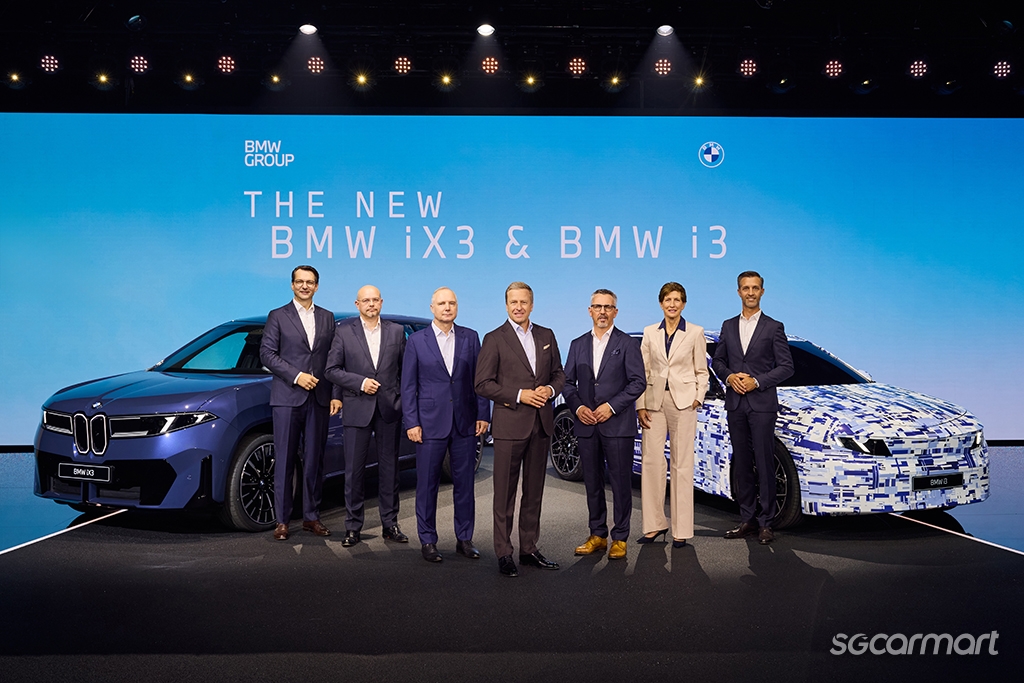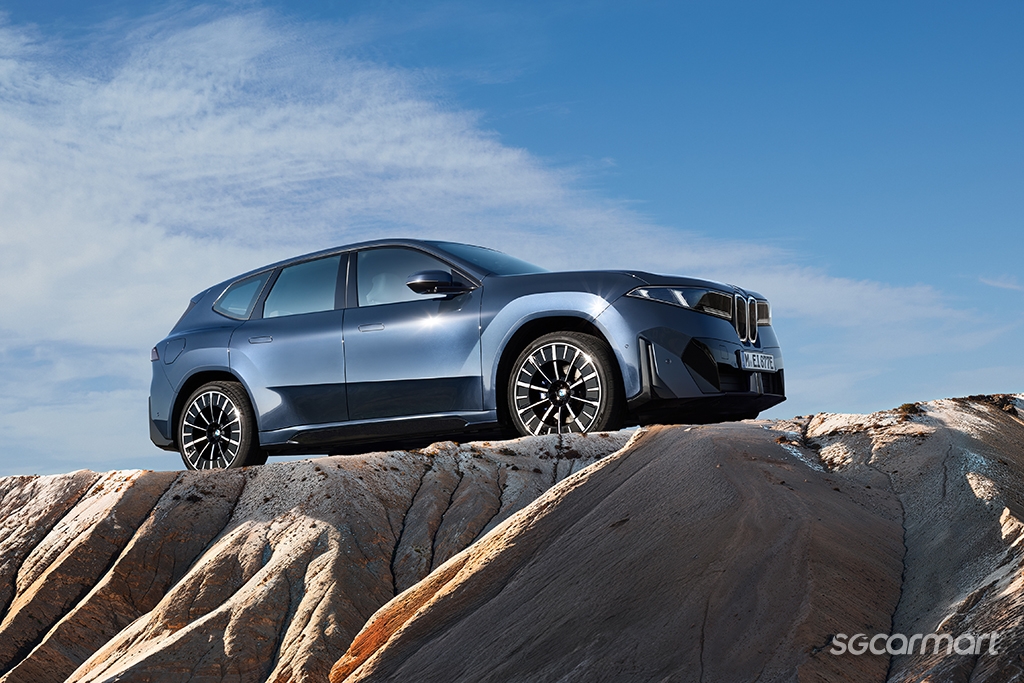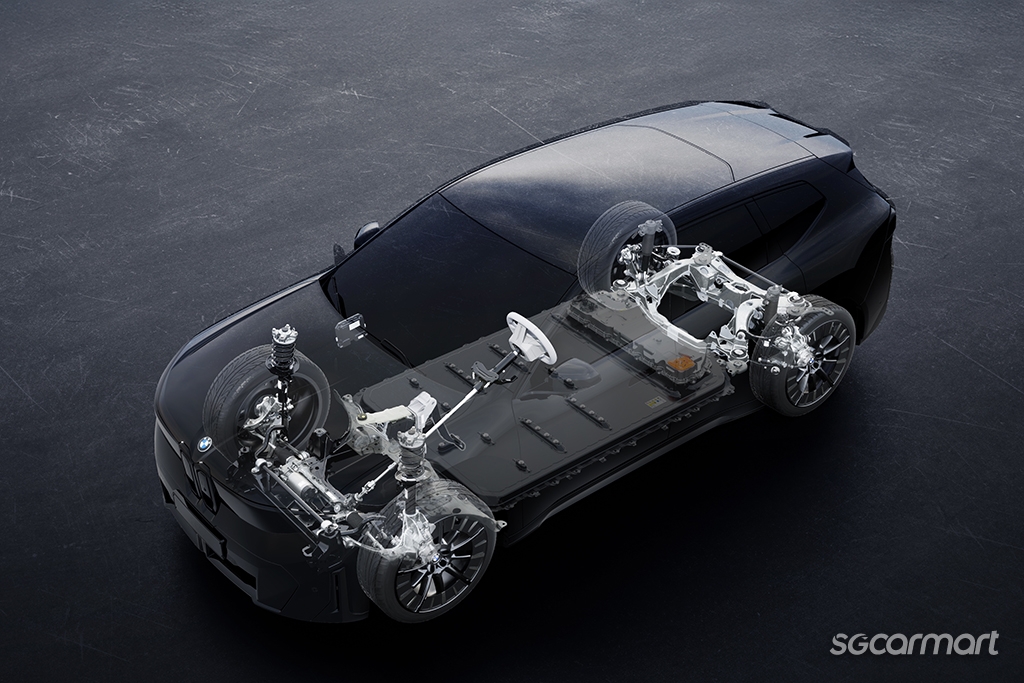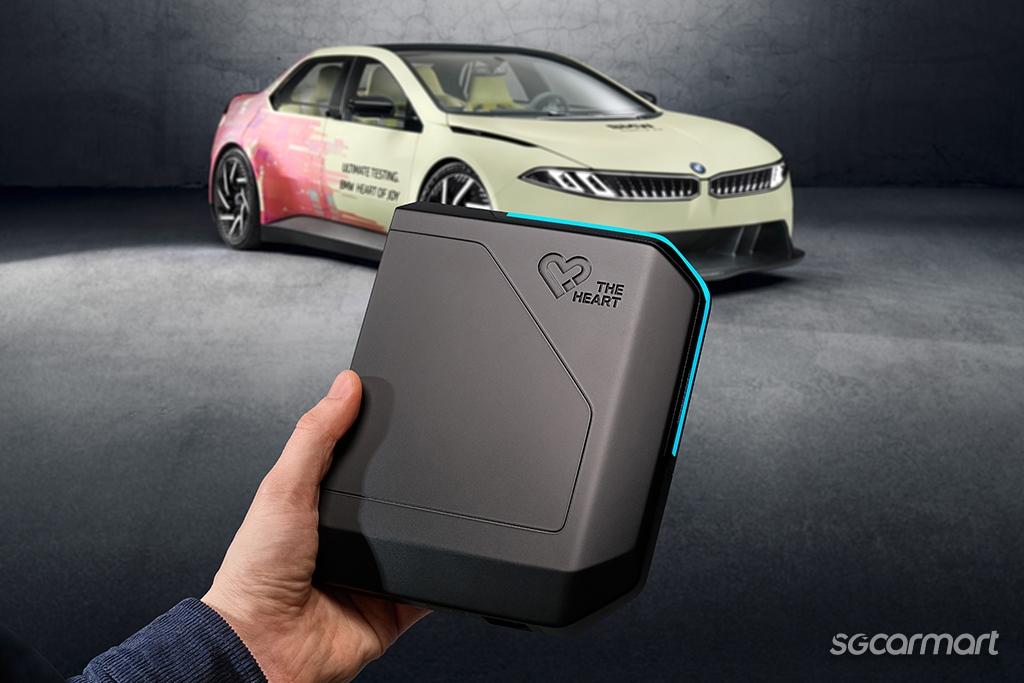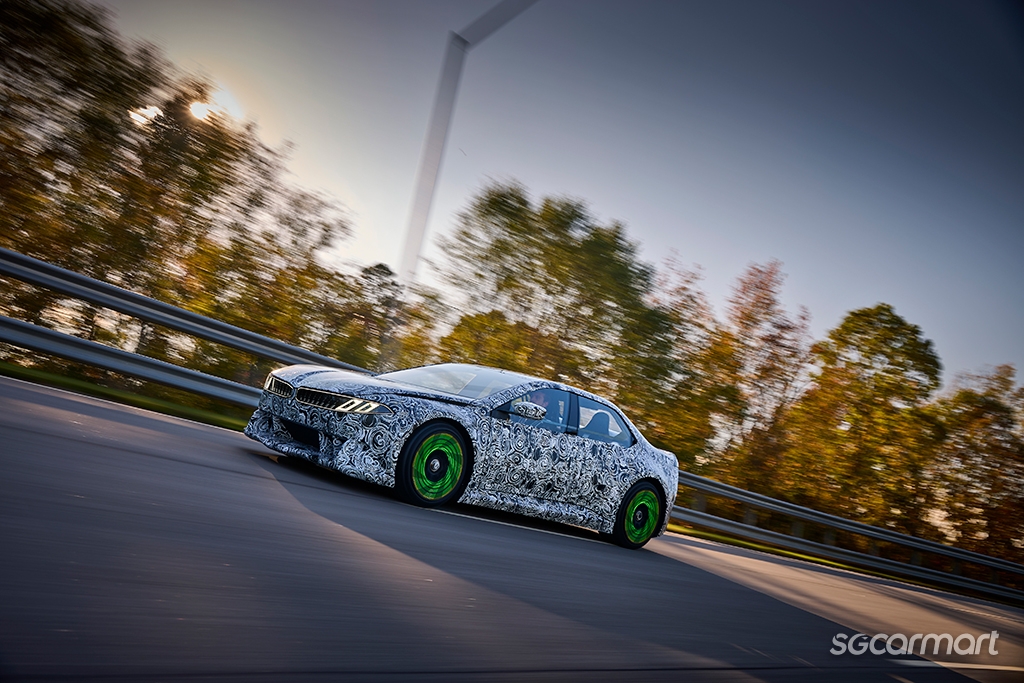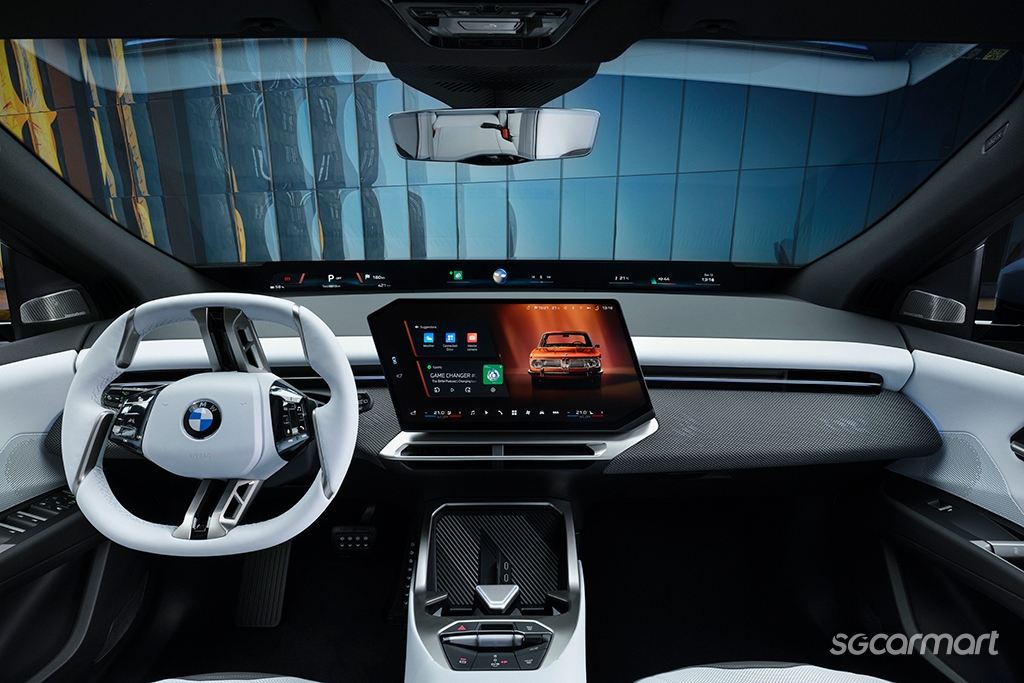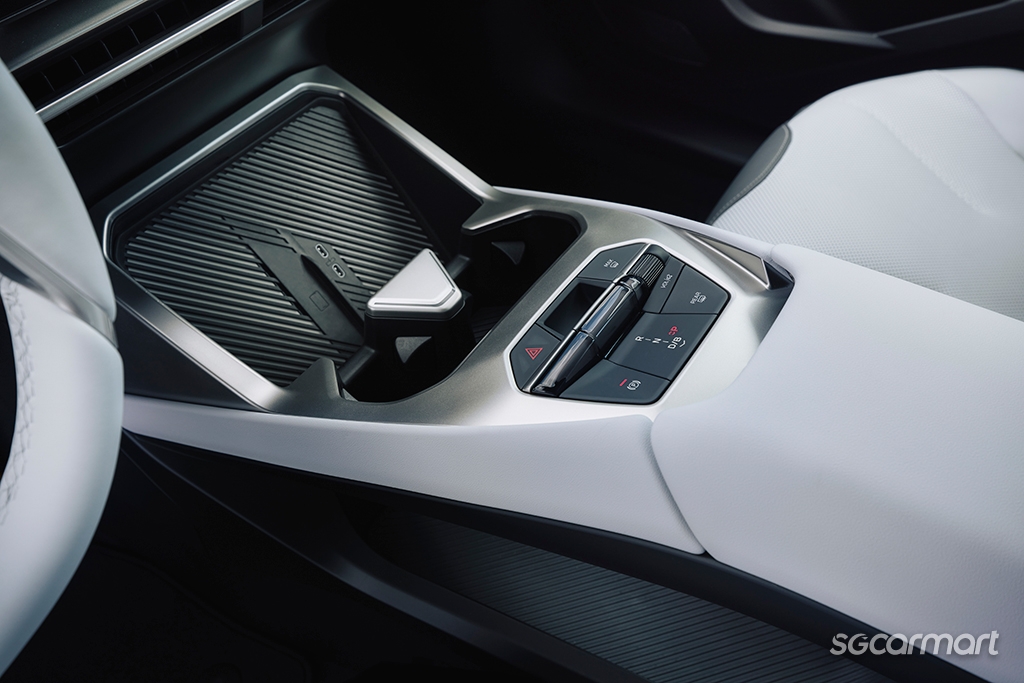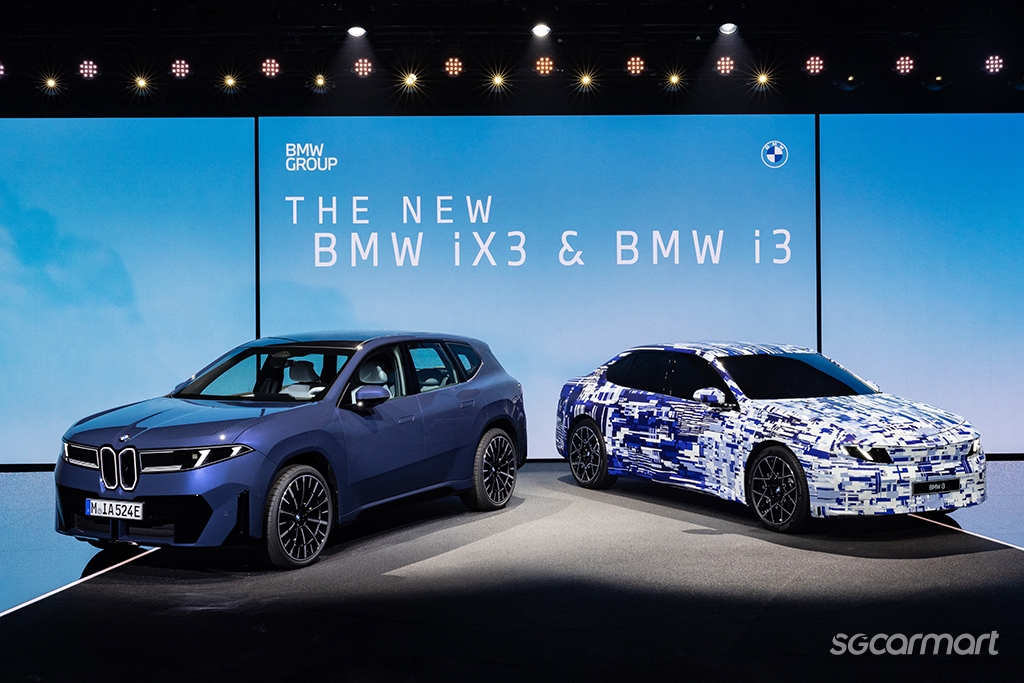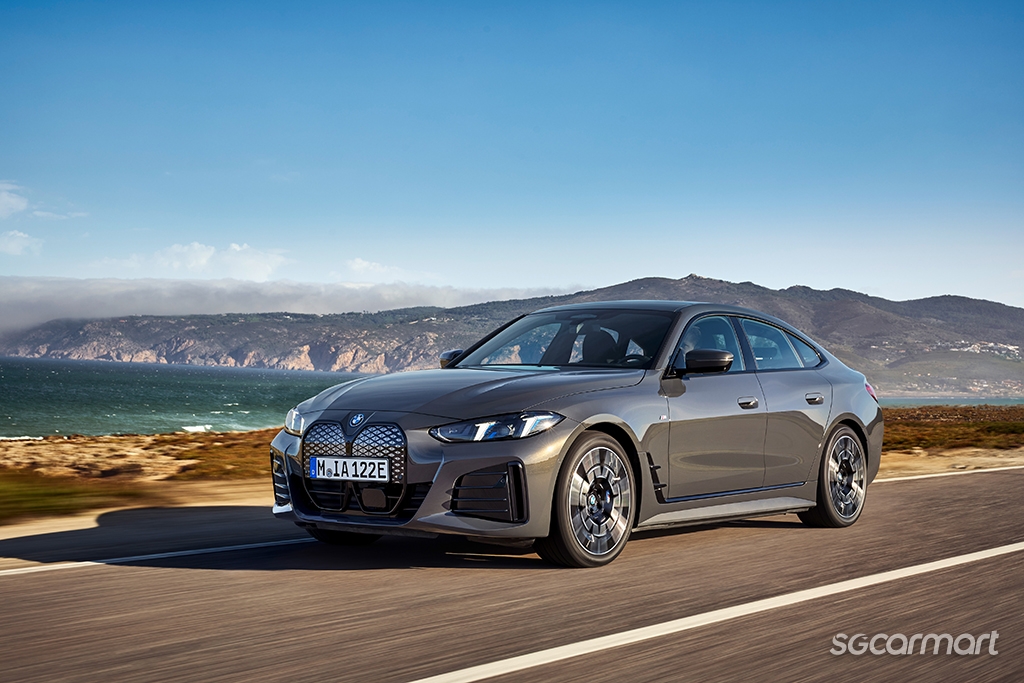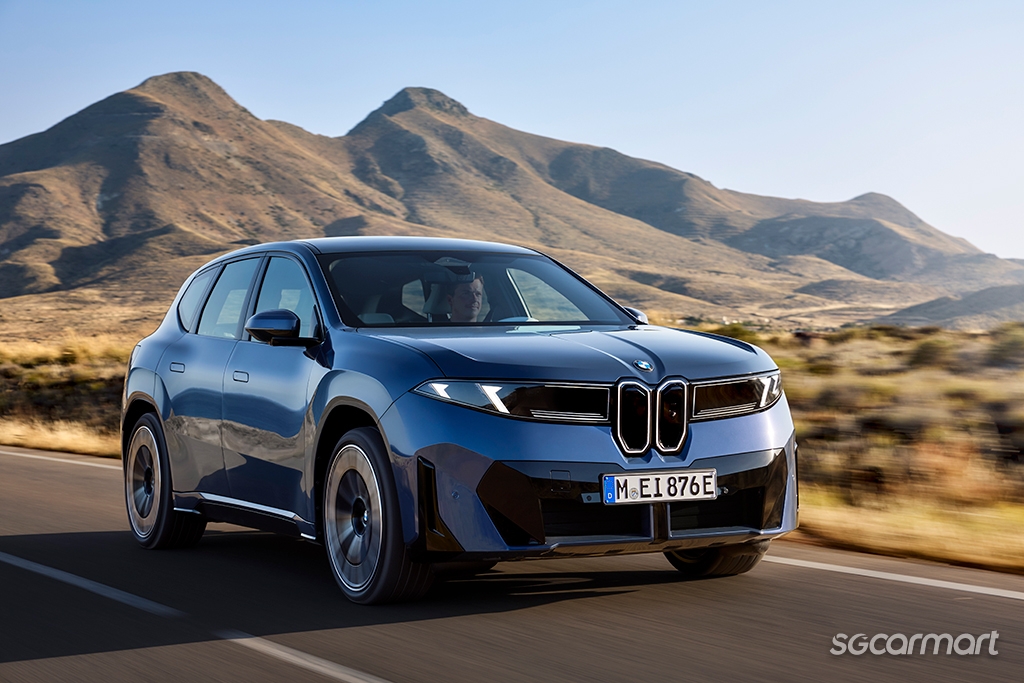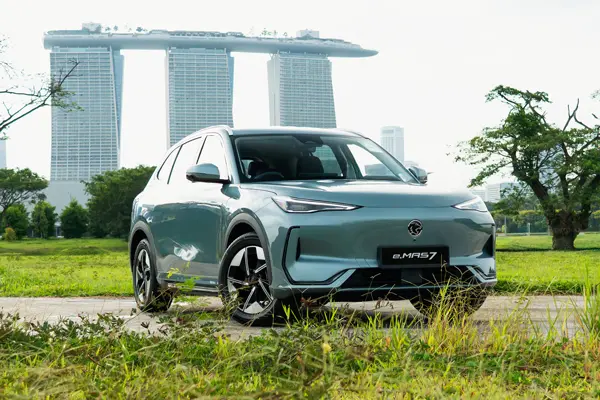Looking, but not turning back: BMW embraces new era with iX3
11 Oct 2025|1,049 views
Minutes after BMW Group CEO, Oliver Zipse, has delivered his keynote speech at the world premiere of the all-new BMW iX3, the entire Board of the Group is ushered forward for a photo.
Standing between the two cars (a camouflaged i3 had earlier also rolled out of the backdrop), warm and firm handshakes are exchanged between Zipse and the members. Making out the micro-conversations on the floor is virtually impossible from where we're seated, halfway up the amphitheatre-style auditorium. But there is an almost palpable sentiment of "We did it" mixed into the smiles, which convey both elation and relief. At last: The new Neue Klasse has broken cover.
The new Neue Klasse
At least the first of it has.
BMW's original Neue Klasse sedans of the 1960s famously pulled the firm back from the brink of bankruptcy. But that's not where things ended; they took things a step further and decisively blazed a path forwards for the brand that helped to give it the definition that it still holds onto quite firmly today: Sporty, luxurious, desirable.
As the leader of the new Neue Klasse, however, the iX3 arrives on far steadier ground.
Admittedly, growing pressure from new Chinese names packing serious firepower (especially with their electric cars) has necessitated that BMW respond with a new-age contender that can make the buyers all around the world sit up and take notice. Still, the brand's prevailing leadership in the luxury space today is hard to dispute; it edged out arch-rival Mercedes-Benz in terms of global passenger car deliveries for 2024.
Despite its callback to the past, then, this iX3's mission is markedly different.
"It came from inside the organisation," Mike Reichelt, Head of Neue Klasse, recalls when asked about the genesis of the 'new Neue Klasse' label, underscoring that it hasn't been thrown around purely as marketing-speak. "[It calls to mind] the big step we had in history [with the BMW 1500] - such a quantum leap in all technologies, and a reset in product development."
A cutting-edge 800V platform sees the iX3 able to support DC charging speeds at up to 400kW over an extended period
And a big leap, the iX3 certainly is.
The headlining figures alone are pretty staggering: An 800km WLTP-rated range from the car's 107.8kWh battery, whose increased energy density is credited to the use of new-generation cylindrical cells that facilitate more efficient packaging. An 800V architecture also allows said battery to support rapid charging at up to 400kW with a DC outlet. BMW estimates that you could put 372km worth of range back into its battery in just 10 minutes.
But the iX3's real magnetism lies in its cognisance that duking it out with numbers alone will not suffice - especially when up against the Chinese. Its secret power? Heritage.
Looking back
Where most brands struggle to make a case for fun behind the wheel when discussing their EVs, the iX3 typifies the brand's promise of "sheer driving pleasure" with renewed passion.
The appropriately-named 'Heart of Joy' - one of four new 'supercomputers' in the Neue Klasse - marks a brand-first for BMW by unprecedentedly marrying drivetrain and driving dynamics functions. It can apparently also process information 10 times faster than the systems used on BMW's previous-generation cars.
Reichelt heaps praise on it, sharing that journalists who have driven early prototypes of the iX3 have told him it drives like a lower-slung i4. "The reaction of the Heart of Joy is so fast in combination with an electric drivetrain that it feels like the car knows where you want to go. That's sensational," he shares.
"[Consider then], how the i3 sedan will drive with the Heart of Joy, and then how the M version will drive. Hopefully you will love it."
Another of the iX3's crowning jewels that supports BMW's renewed emphasis on driving engagement is BMW Panoramic iDrive: A brand new operating and display system, which sees a pillar-to-pillar projection (called the 'Panoramic Vision Display') cast onto the lower end of the windscreen.
The goal, the brand says, isn't new even if its method of achieving it this time has changed: Eyes on the road, hands on the wheel.
"If you take a look at what's happening on the general market today, you see a dramatic increase in display size. You know… replacing the complete dashboard with displays. This is not what we're doing," Stephen Durach, Senior Vice President for UI/UX explains.
Instead, he proffers that the new setup helps to hierarchise information. In particular, the elevated positioning of Panoramic Vision Display is no coincidence.
"The distraction is even less because you don't have to look down; it's directly in the line of sight," Durach notes about the Display. "And then if you really reduce the information on the minimum, it's not distracting anymore. Actually when you drive this car - and you'll feel it - it feels so natural because it's really very reduced, very efficient and very precise."
But not turning back
BMW has made it clear that to come up with the all-new iX3, it first had to thoroughly survey its past. But a line does exist between looking back and turning back - and the iX3 also stands as a throat-clearing proclamation that the brand is not doing the latter.
For instance, longtime fans might be overcome with nostalgia when they step into the iX3 and realise that the rotary controller - a long beloved cornerstone of the iDrive system, there since its first-generation iteration - has been given the chop.
Durach points to data gathered by his team showing that in-car usage of the controller has diminished drastically with the growing sophistication of BMW's touchscreens; he expects that the need to reach downwards for it will dip even further now with the firm's new AI-powered, voice-activated personal assistant. Still, only time will reveal how customers take to the new system.
Furthermore, perhaps more staggering than the iX3's technological leaps is the big revelation that 40 new and updated models will soon carry on the innovations it debuts. The timeline, too, is just as ambitious as the scale at play: All of these cars are set to be unveiled in production-ready form by 2027.
"We felt that the step is so big that you have to modernise the current portfolio," Reichelt explains to us. "That's the only choice."
He is quick to remind us that BMW is not keen on rewriting older rulebooks just for the sake of proclaiming change, and will not straightjacket customers into a singular pathway where it counts most - namely, electrification.
"There is an i3 on the Neue Klasse platform with all the technology, but we also have an ICE offering with this design language of Neue Klasse; with the Panoramic iDrive; with the digital content. So the customer can decide: Do you want to jump into the electric world?"
Furthermore, it's not as if the iX3's template - especially from a visual standpoint - will be replicated mindlessly across the lineup.
"BMW is not the sea of sameness," Oliver Heilmer, Head of Design BMW Compact Class and Neue Klasse, BMW M, emphatically declares. For instance, vertically-oriented kidneys may work better for its SUVs, but a more horizontal benefits would cohere better with the lower-slung silhouettes of its sedans; sportier models like the M cars, in turn, would pursue an even more aggressive path. "It's about [the idea of] family members," Heilmer reminds us, noting that a singular cohesive and overarching design philosophy can manifest itself still in varying forms.
Reichelt admits that the journey towards the firm's new Neue Klasse vision was "a tough timeline" - but with the iX3 now unveiled in full and on a steady track to series production, BMW seems to think it's gotten its crucial first foot through the door. Face to face now with the next Herculean task of pushing out another 40 more cars from hereon, the firm remains steadfast.
"We are convinced that [this is] completely the right way," Reichelt asserts again. "It's the time."
Minutes after BMW Group CEO, Oliver Zipse, has delivered his keynote speech at the world premiere of the all-new BMW iX3, the entire Board of the Group is ushered forward for a photo.
Standing between the two cars (a camouflaged i3 had earlier also rolled out of the backdrop), warm and firm handshakes are exchanged between Zipse and the members. Making out the micro-conversations on the floor is virtually impossible from where we're seated, halfway up the amphitheatre-style auditorium. But there is an almost palpable sentiment of "We did it" mixed into the smiles, which convey both elation and relief. At last: The new Neue Klasse has broken cover.
The new Neue Klasse
At least the first of it has.
BMW's original Neue Klasse sedans of the 1960s famously pulled the firm back from the brink of bankruptcy. But that's not where things ended; they took things a step further and decisively blazed a path forwards for the brand that helped to give it the definition that it still holds onto quite firmly today: Sporty, luxurious, desirable.
As the leader of the new Neue Klasse, however, the iX3 arrives on far steadier ground.
Admittedly, growing pressure from new Chinese names packing serious firepower (especially with their electric cars) has necessitated that BMW respond with a new-age contender that can make the buyers all around the world sit up and take notice. Still, the brand's prevailing leadership in the luxury space today is hard to dispute; it edged out arch-rival Mercedes-Benz in terms of global passenger car deliveries for 2024.
Despite its callback to the past, then, this iX3's mission is markedly different.
"It came from inside the organisation," Mike Reichelt, Head of Neue Klasse, recalls when asked about the genesis of the 'new Neue Klasse' label, underscoring that it hasn't been thrown around purely as marketing-speak. "[It calls to mind] the big step we had in history [with the BMW 1500] - such a quantum leap in all technologies, and a reset in product development."
A cutting-edge 800V platform sees the iX3 able to support DC charging speeds at up to 400kW over an extended period
And a big leap, the iX3 certainly is.
The headlining figures alone are pretty staggering: An 800km WLTP-rated range from the car's 107.8kWh battery, whose increased energy density is credited to the use of new-generation cylindrical cells that facilitate more efficient packaging. An 800V architecture also allows said battery to support rapid charging at up to 400kW with a DC outlet. BMW estimates that you could put 372km worth of range back into its battery in just 10 minutes.
But the iX3's real magnetism lies in its cognisance that duking it out with numbers alone will not suffice - especially when up against the Chinese. Its secret power? Heritage.
Looking back
Where most brands struggle to make a case for fun behind the wheel when discussing their EVs, the iX3 typifies the brand's promise of "sheer driving pleasure" with renewed passion.
The appropriately-named 'Heart of Joy' - one of four new 'supercomputers' in the Neue Klasse - marks a brand-first for BMW by unprecedentedly marrying drivetrain and driving dynamics functions. It can apparently also process information 10 times faster than the systems used on BMW's previous-generation cars.
Reichelt heaps praise on it, sharing that journalists who have driven early prototypes of the iX3 have told him it drives like a lower-slung i4. "The reaction of the Heart of Joy is so fast in combination with an electric drivetrain that it feels like the car knows where you want to go. That's sensational," he shares.
"[Consider then], how the i3 sedan will drive with the Heart of Joy, and then how the M version will drive. Hopefully you will love it."
Another of the iX3's crowning jewels that supports BMW's renewed emphasis on driving engagement is BMW Panoramic iDrive: A brand new operating and display system, which sees a pillar-to-pillar projection (called the 'Panoramic Vision Display') cast onto the lower end of the windscreen.
The goal, the brand says, isn't new even if its method of achieving it this time has changed: Eyes on the road, hands on the wheel.
"If you take a look at what's happening on the general market today, you see a dramatic increase in display size. You know… replacing the complete dashboard with displays. This is not what we're doing," Stephen Durach, Senior Vice President for UI/UX explains.
Instead, he proffers that the new setup helps to hierarchise information. In particular, the elevated positioning of Panoramic Vision Display is no coincidence.
"The distraction is even less because you don't have to look down; it's directly in the line of sight," Durach notes about the Display. "And then if you really reduce the information on the minimum, it's not distracting anymore. Actually when you drive this car - and you'll feel it - it feels so natural because it's really very reduced, very efficient and very precise."
But not turning back
BMW has made it clear that to come up with the all-new iX3, it first had to thoroughly survey its past. But a line does exist between looking back and turning back - and the iX3 also stands as a throat-clearing proclamation that the brand is not doing the latter.
For instance, longtime fans might be overcome with nostalgia when they step into the iX3 and realise that the rotary controller - a long beloved cornerstone of the iDrive system, there since its first-generation iteration - has been given the chop.
Durach points to data gathered by his team showing that in-car usage of the controller has diminished drastically with the growing sophistication of BMW's touchscreens; he expects that the need to reach downwards for it will dip even further now with the firm's new AI-powered, voice-activated personal assistant. Still, only time will reveal how customers take to the new system.
Furthermore, perhaps more staggering than the iX3's technological leaps is the big revelation that 40 new and updated models will soon carry on the innovations it debuts. The timeline, too, is just as ambitious as the scale at play: All of these cars are set to be unveiled in production-ready form by 2027.
"We felt that the step is so big that you have to modernise the current portfolio," Reichelt explains to us. "That's the only choice."
He is quick to remind us that BMW is not keen on rewriting older rulebooks just for the sake of proclaiming change, and will not straightjacket customers into a singular pathway where it counts most - namely, electrification.
"There is an i3 on the Neue Klasse platform with all the technology, but we also have an ICE offering with this design language of Neue Klasse; with the Panoramic iDrive; with the digital content. So the customer can decide: Do you want to jump into the electric world?"
Furthermore, it's not as if the iX3's template - especially from a visual standpoint - will be replicated mindlessly across the lineup.
"BMW is not the sea of sameness," Oliver Heilmer, Head of Design BMW Compact Class and Neue Klasse, BMW M, emphatically declares. For instance, vertically-oriented kidneys may work better for its SUVs, but a more horizontal benefits would cohere better with the lower-slung silhouettes of its sedans; sportier models like the M cars, in turn, would pursue an even more aggressive path. "It's about [the idea of] family members," Heilmer reminds us, noting that a singular cohesive and overarching design philosophy can manifest itself still in varying forms.
Reichelt admits that the journey towards the firm's new Neue Klasse vision was "a tough timeline" - but with the iX3 now unveiled in full and on a steady track to series production, BMW seems to think it's gotten its crucial first foot through the door. Face to face now with the next Herculean task of pushing out another 40 more cars from hereon, the firm remains steadfast.
"We are convinced that [this is] completely the right way," Reichelt asserts again. "It's the time."
Thank You For Your Subscription.













